Live the unique experience of exploring the outfitting camp of the May family, a fishing paradise for Atlantic salmon at the foot of the magnificent Ulittaniujalik, followed by a 107 km descent of the legendary George River.
This river in the heart of the wilderness is a challenge for experienced paddlers. Thanks to the expertise of our guides, however, it’s also accessible to the uninitiated looking for an adventure and a challenge. The George River is renowned for its heart-stopping rapids. This descent is the best way to explore Parc national Ulittaniujalik, and offers a host of hiking opportunities with splendid views of the valley sculpted by the passage of millennia-old glaciers.
ITINERARY
Days 1 and 2 | Exploring the Northern Village of Kangiqsualujjuaq
Departure from Montréal to Kuujjuaq (2-hour flight). Then transfer from Kuujjuaq to Kangiqsualujjuaq (45–50-minute flight), where Parc national Kuururjuaq staff will be waiting for you. A guide will escort you to your hotel for check-in before taking you on a tour of the village. You’ll have the chance to meet elders and get acquainted with Inuit culture, stories, and legends. The evening will be all yours.
These first two days will be a time to enjoy the fresh air of the Far North, meet the other trip participants, and learn more about life in Nunavik. Kangiqsualujjuaq is nestled among the mountains on the banks of the George River, just 15 kilometres from Ungava Bay. It’s a welcoming community where you’ll enjoy a culturally diverse experience. You can take advantage of a day’s boat trip to visit hunting or fishing camps, check fishing nets, or go along on a seal hunt. If the weather prevents you from going out on the water, you can head for the bay or along the Koroc River to the north of the village. At the end of the day, you may have time for a short hike up the nearby mountains to take in the magnificent view of the bay and village.
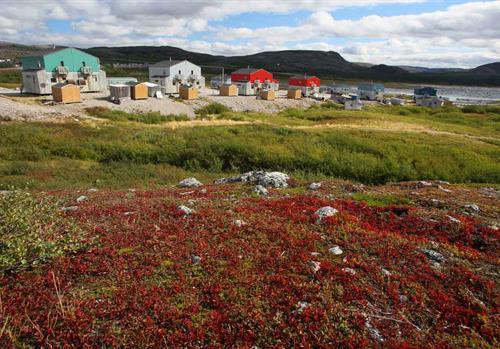
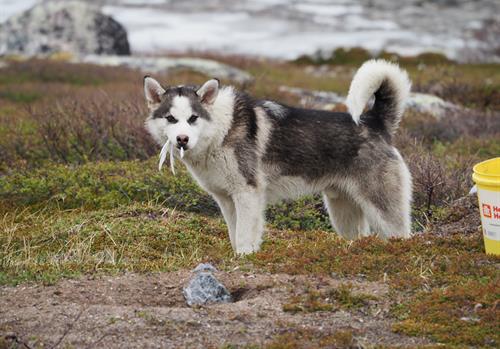
• Accommodations: Coop Hotel in Kangiqsualujjuaq
Day 3 | Welcome to Pyramid Mountain Camp
You will leave Kangiqsualujjuaq for Pyramid Mountain Camp aboard a chartered aircraft for a 45-minute-flight. Upon arrival, your guides will take you on a tour of the facilities of this magnificent outfitting camp nestled in the valley facing Pyramid Peak. You’ll have the opportunity to meet the May family, who have run the outfitting operation since the 1950s, and learn more about the historic occupation of the land.
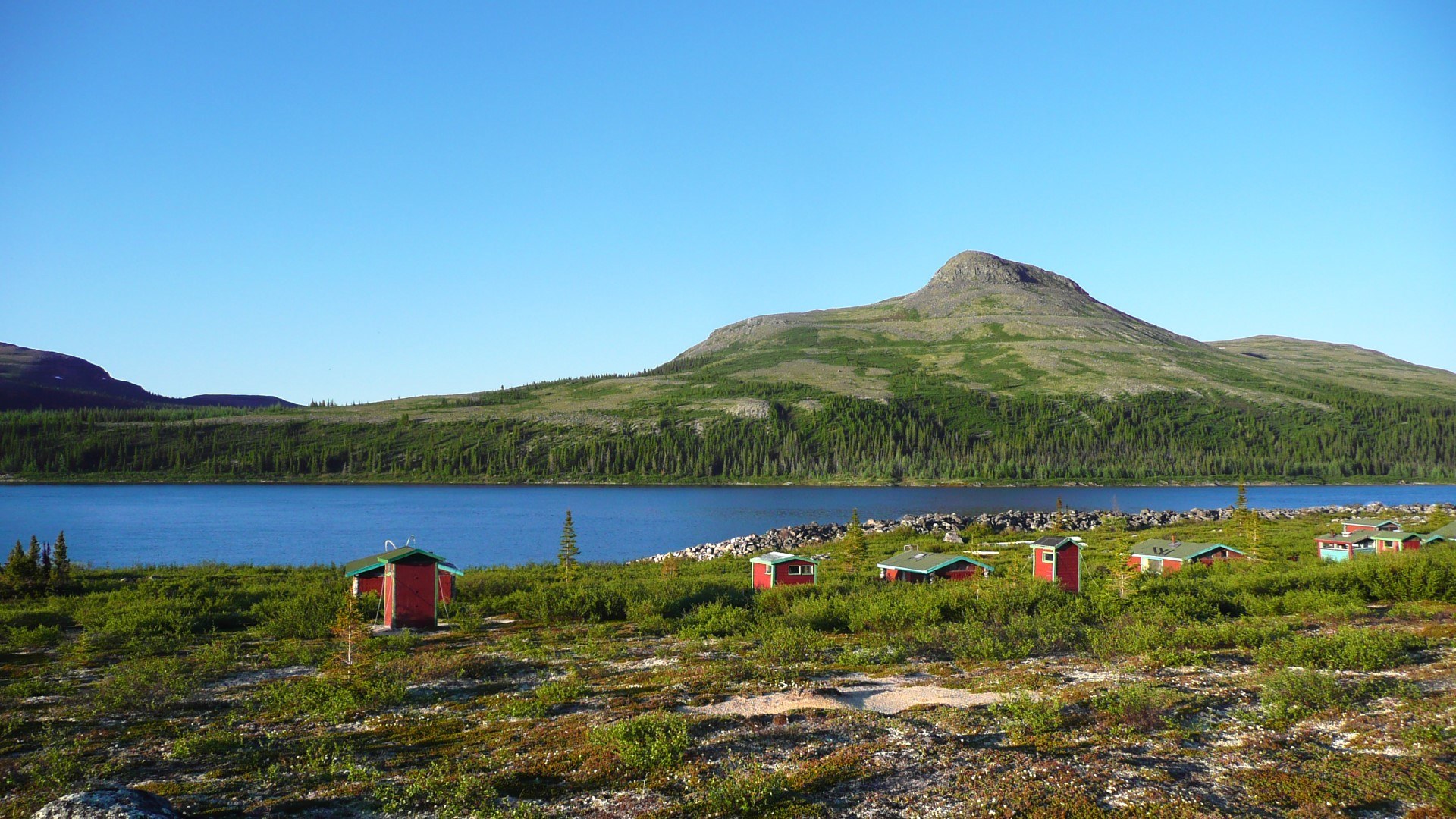
• Accommodations: Pyramid Mountain Camp (rustic cabins with wood-burning stoves)
Day 4 | Ascent of Pyramid Peak and river practice
This 4th day is the ideal time to take the pulse of the area and become acquainted with the river on which you’ll be paddling. Accompanied by your guide, you’ll cross to the other side of the river to climb Pyramid Peak (464 m), where you’ll enjoy a superb view of the George River. On your way back, you’ll have the opportunity to practise canoe safety techniques. Those who wish to catch their evening meal will be able to do so. You’ll be invited to fish for Atlantic salmon under the guidance of the May family team (make sure you have all the necessary fishing permits for your trip before you leave).
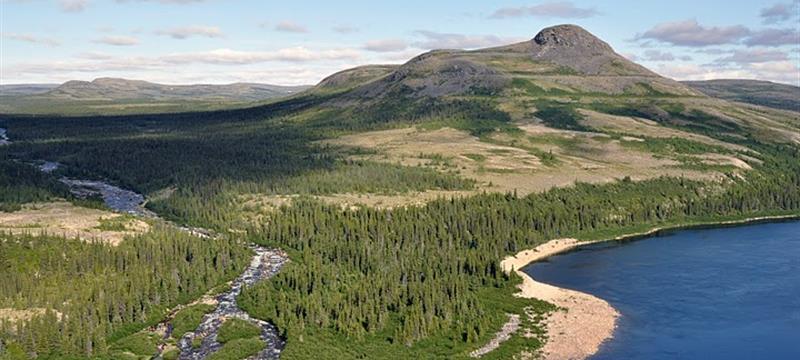

• Accommodations: Pyramid Mountain Camp (rustic cabins with wood-burning stoves)
Day 5 | Paddle down your first section of the river
The George River Valley undulates between mountains of contrasting colours and verdant slopes. It offers many impressive views of numerous waterfalls, canyons, and bucolic streams nestled in the mountainside. Your first day going down the river will begin with numerous RI, whitewater, and RII rapids, as well as three 500-metre RIIIs (which can easily be circumvented, according to your group’s experience). The vast majority of rapids offer lines to avoid technical or difficult sections for less experienced paddlers. Your guide will stop before each rapid to discuss the best line with the group. Your guide will then lead the way for you to follow safely.
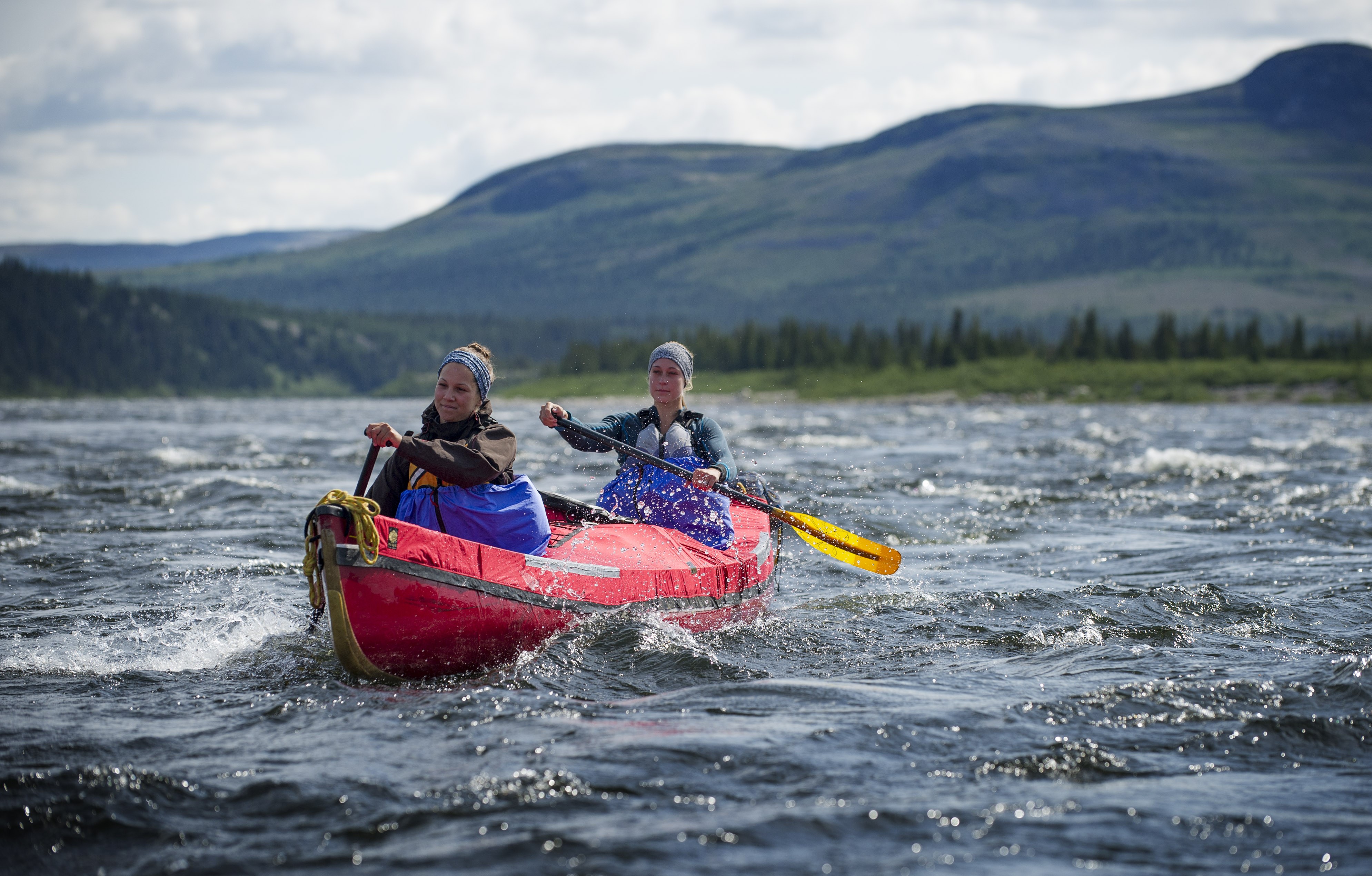

• Accommodations: Camping
Day 6 | Exploring the summit of Mistintshuk
You will start your day with a 6–7 km hike from your campsite to the summit of Mistintshuk. As you climb, the views will open up on both sides of this spectacular valley once covered in ice. Upon your return, you will pack up and continue downstream for 11 km, crossing several RI and RII rapids, as well as 2 RIIIs. You’ll set up camp on a magnificent plateau in a rustic setting. Leaving the cooking and whitewater gear close to the river, you’ll have to climb a short 30-meter incline with your camping gear, just to get a taste. For those who want to, the area offers superb fishing.
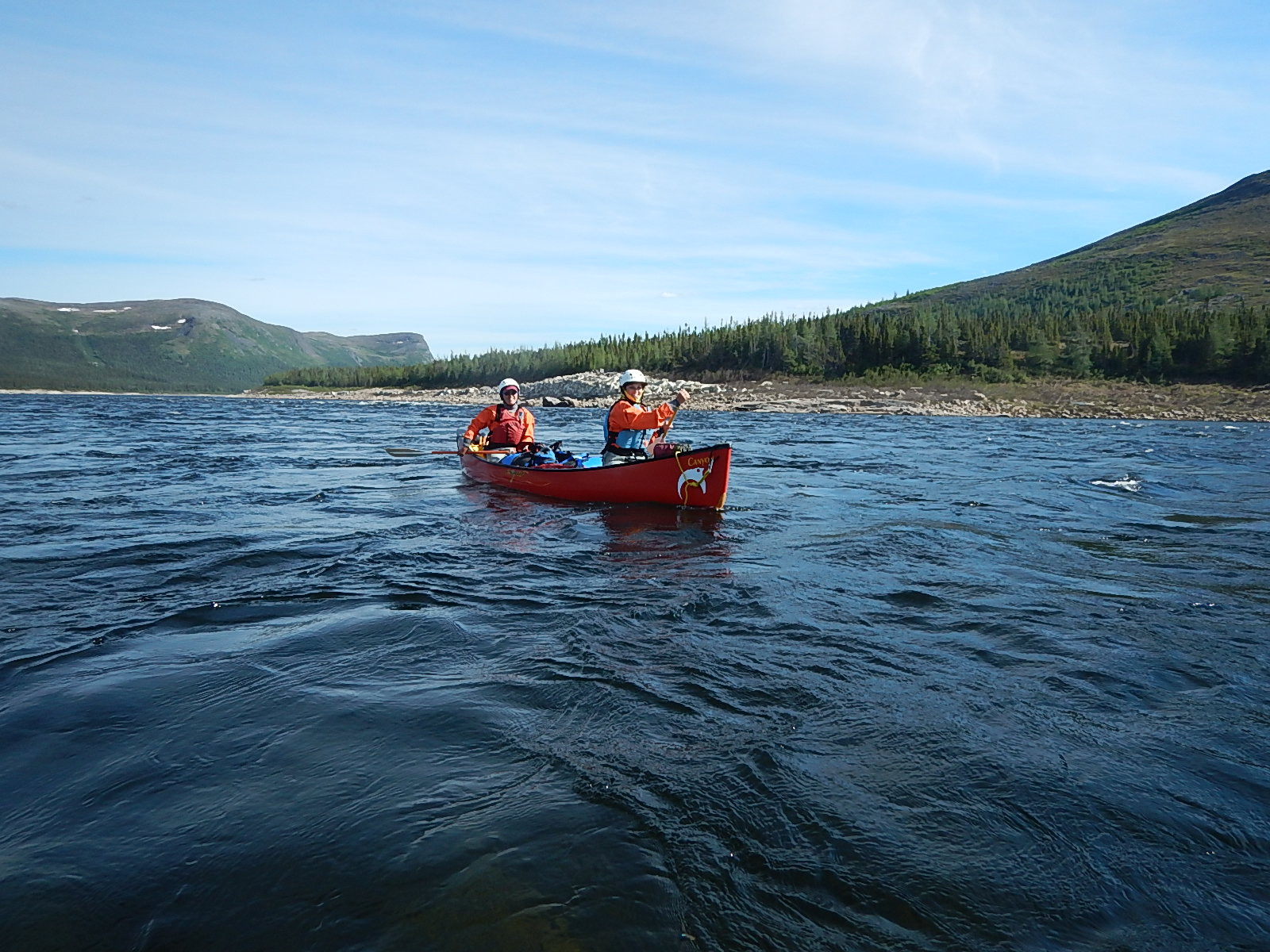

• Accommodations: Camping
Day 7 | 30 km on the trail of the glaciers
You’ll leave your camp and head to Qijualuit, an island on the left bank of the river. Facing it is a beautiful campsite. This section of the river has whitewater, RI, and RII rapids, as well as 2 RIIIs. You’ll also cross a 5-kilometre stretch of flat water. You’ll enjoy the river’s twists and turns, opening up to new landscapes at every turn. Here, you can easily picture ancient glaciers sculpting the valley and creating these majestic mountains a thousand years ago. You’ll set up camp on the right bank of the river opposite the island. Here, too, you’ll find excellent fishing.

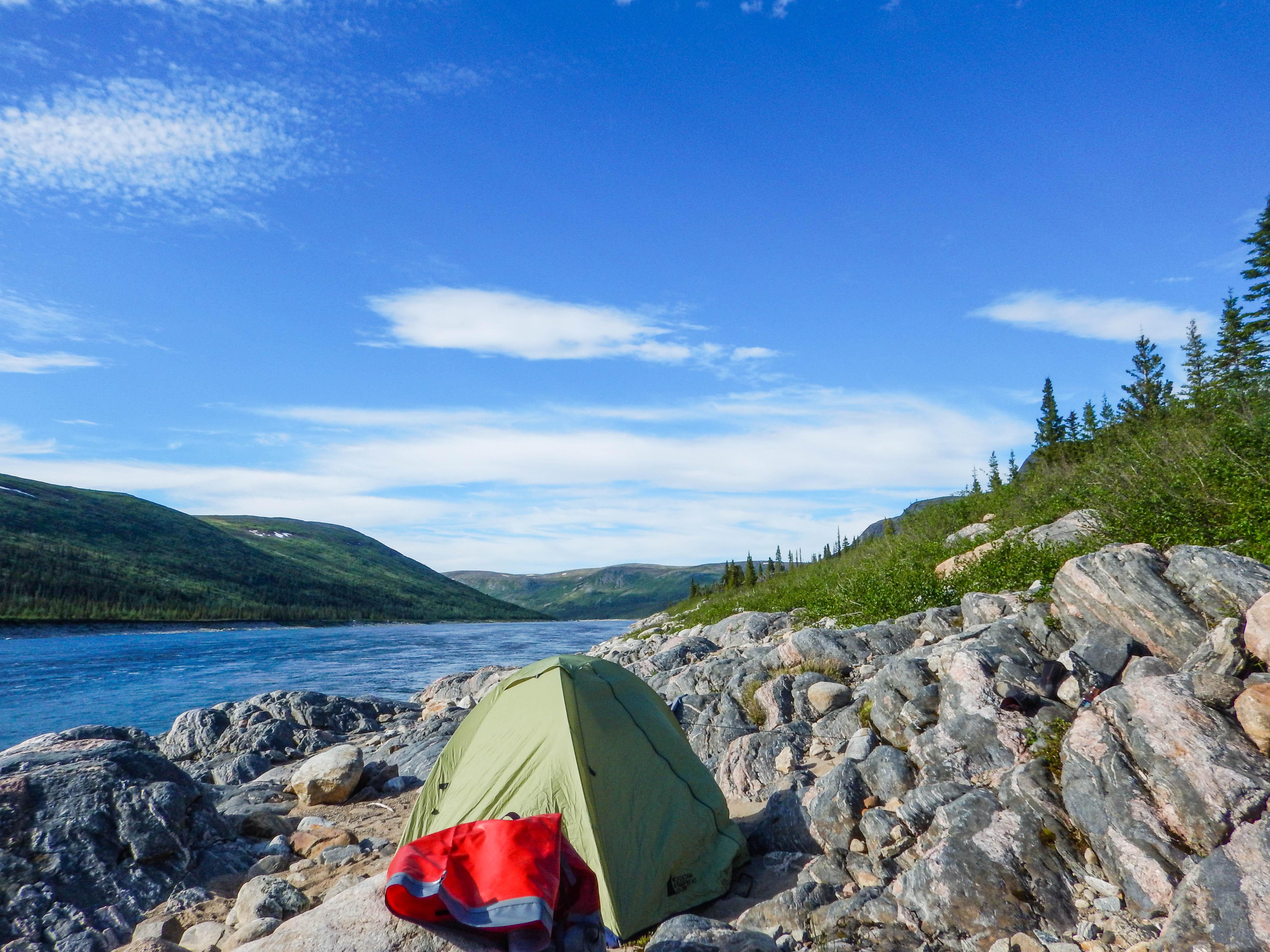
• Accommodations: Camping
Day 8 | A visit to Elson Rapids and Helen Falls
After a few kilometres on the river (whitewater, RI, RIII) you’ll stop for lunch on a rocky beach facing Elson Rapids, where fishing enthusiasts can cast a few last lines. You will then enter the territory of Helen Falls Lodge Outfitters, where fishing is not authorized. After lunch, you’ll embark on a fairly technical section of the river with whitewater, a 700-meter RIII, followed by an 850-meter RIV that can be bypassed to the left to avoid the most challenging part of the rapid. The last kilometres to your campsite will be mostly flat water, whitewater, and several RIIs. You’ll then camp on a lovely beach where you can relax and enjoy the scenery.
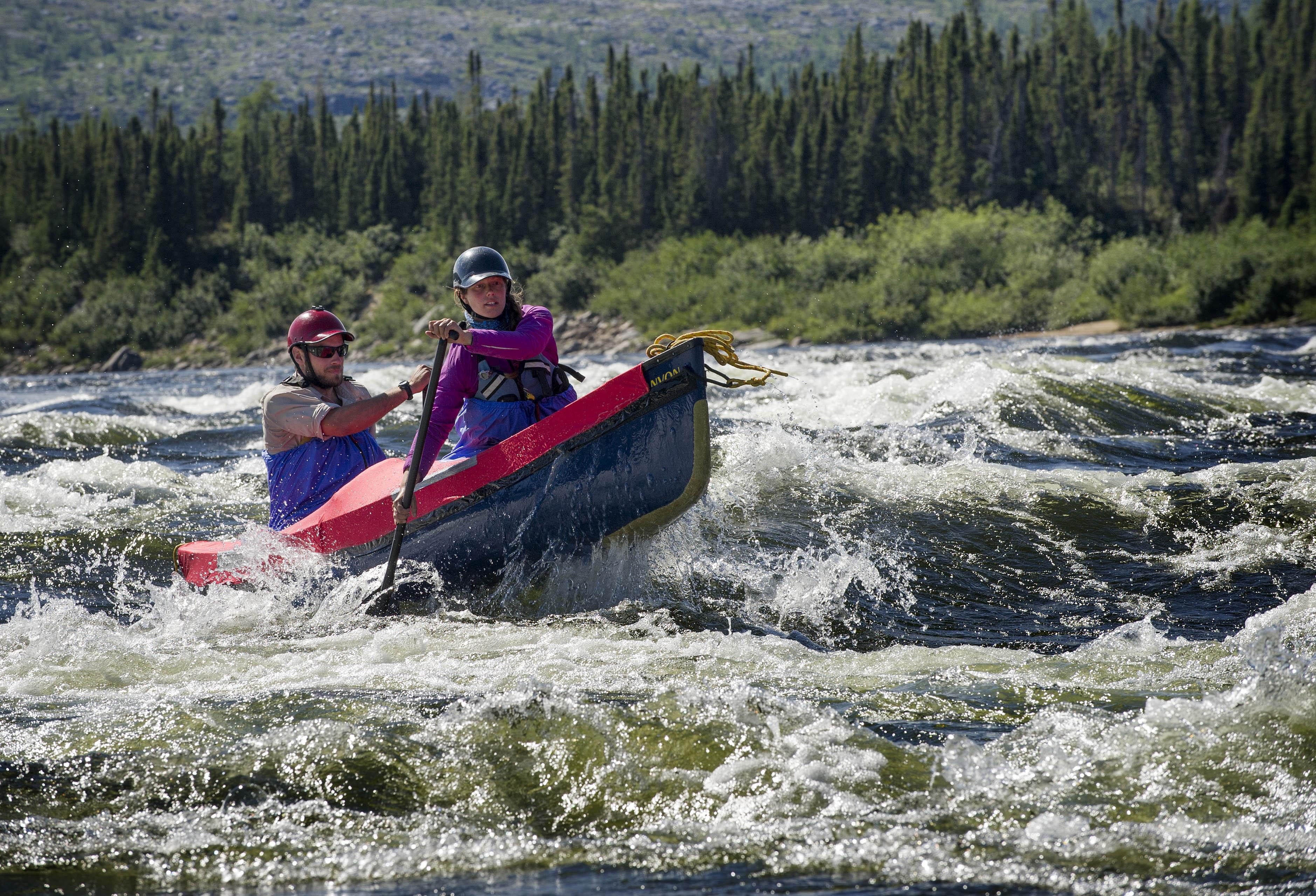
• Accommodations: Camping
Day 9 | Helen Falls and the old portage route
You will paddle the 11 km to the start of the portage route around Helen Falls. Depending on the water level and the experience of your group, you may decide to tie your canoes from the top of the boulders to get past the first RIV. You can then get back into your canoe to paddle to a sheltered beach and prepare for your portage. The portage trail has been maintained by Kangiqsualujjuaq residents for years. It is 1.6 km to 3 km long depending on where you start. The campsite is on a large, stunning beach. Stay alert: the high tides of Kangiqsualujjuaq run right up to this spot. You’ll have time for a hike to enjoy a magnificent view of Helen Falls before a well-deserved rest.

• Accommodations: Camping
Day 10 | Scenic return to Kangiqsualujjuaq and Kuujjuaq
You’ll pack up for one last time and paddle the last 5 km of flat water to Helen Falls Lodge outfitters, where you will leave your canoes and wait for a motorboat or plane to pick you up. Enjoy a scenic return trip (4 hours by motorboat or 30 minutes by plane). As you follow the meandering George River back to the community, you’ll think back on the highlights of your adventure and this land rich in history.
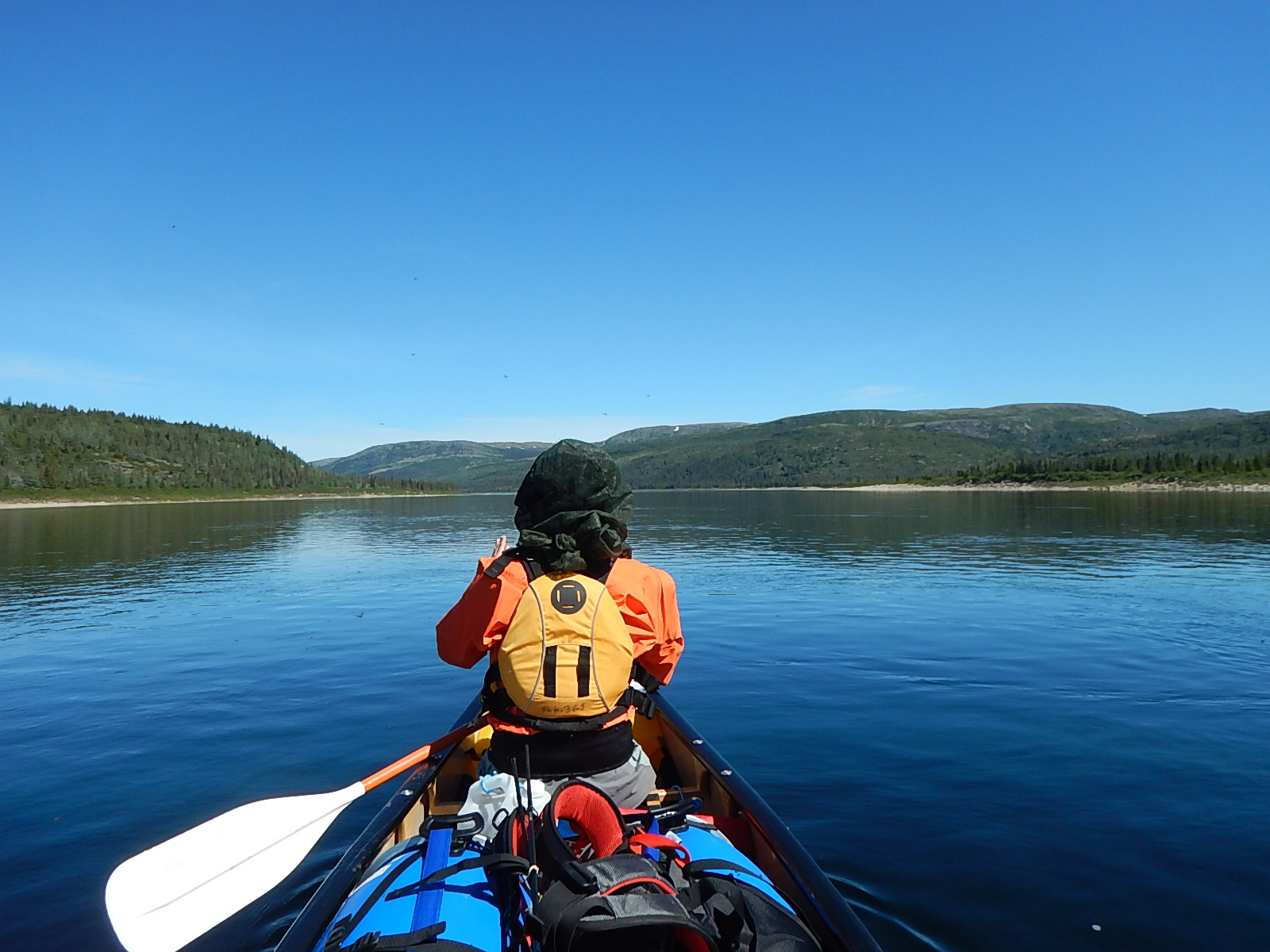
• Accommodations: Coop Hotel in Kuujjuaq
Day 11 | Explore the community of Kuujjuaq and return to Montréal
After breakfast, Nunavik Parks staff will pick you up to check you in at the airport. You’ll then be taken on a tour of the village, a trip north along the Koksoak River, or an expedition to discover Kuujjuaq’s best-kept secrets. You’ll also have the chance to visit the local handicraft store, where you’ll find stone carvings, pualluk (Inuit mittens), kamik (Inuit boots), nasak (Inuit hat), and much more. You’ll head back south in the afternoon, with a heart full of precious memories.



Drones
Nunavik Parks (Kativik Regional Government) does not permit the use of drones for recreational purposes in the parks it manages (Parc national Tursujuq, Parc national des Pingualuit, Parc national Kuururjuaq, and Parc national Ulittaniujalik) so as not to impact the visitor experience or disturb wildlife.
Good to know
In Nunavik, the weather is constantly changing. Therefore, the expedition is subject to change at any time to take current weather conditions into account, so be prepared to adapt to unforeseen situations. This extraordinary expedition will require you to be in the right frame of mind, which includes having a team spirit, being adaptable, and strictly adhering to safety rules. The journey will require you to accept a certain measure of adventure and unexpected situations. However, you will be able to rely entirely on the expertise and know-how of your guides to make the most of your stay.
Notes
Price per person, before taxes (all-inclusive: transportation form Montréal, meals, accommodation, outdoor gear, equipment for preparing and serving meals). Find out about preferential rates for JBNQA beneficiaries.
This package requires 6 people to guarantee departure. Please contact us to inquire about joining groups that have already been formed.
Please note that hunting and trapping are strictly prohibited in Quebec’s national parks. However, Inuit have the right to practise their subsistence activities throughout Nunavik, including in parc national Ulittaniujalik. Therefore, witnessing a group of Inuit hunting caribou or ringed seals, or trapping foxes, can become a part of your Nunavik park experience.
Safety
All expeditions led by the parc national Ulittaniujalik team can be tracked day by day thanks to daily satellite positioning. The team can contact park staff at any time with a satellite phone. Visitors to Nunavik’s parks must take some responsibility for their own safety, and risk management must be an integral part of their experience. We strongly advise you to take out an insurance policy covering air evacuation costs.
